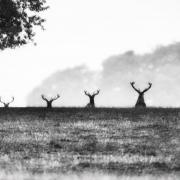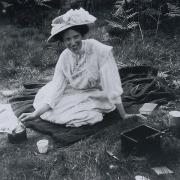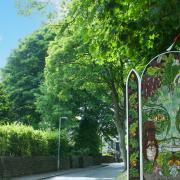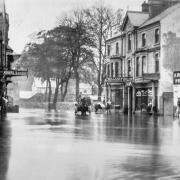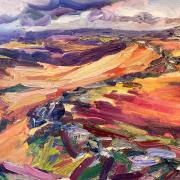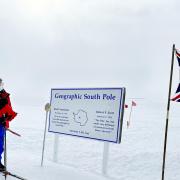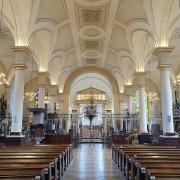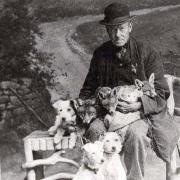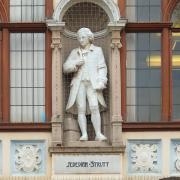John Flamsteed, the first Astronomer Royal and founder of the Greenwich Royal Observatory, is Roly Smith’s latest subject in his series on the great people of Derbyshire
One of the most intractable and urgent scientific dilemmas of the 18th century was what was widely known as ‘the longitude problem.’
Latitude was easy enough, as its parallel lines circled the globe from the Equator in concentric rings.

But without the ability to measure longitude, i.e. the vertical north-south lines running from pole to pole, the great seafaring explorers like Sir Francis Drake and Captain James Cook were literally lost at sea as soon as they lost sight of land.
What was needed was a zero degree longitude line from which all others could be measured. There was an international dispute about where that critical, prime meridian should be drawn, and one of the men who helped resolve it was John Flamsteed, son of a Derby maltster and the first Astronomer Royal.
Visitors to the Royal Observatory at Greenwich can now delight in spanning that line – a double metal strip where east meets west at longitude 0 degrees – where they can literally stand with one foot in the eastern hemisphere and one in the west.

The reason it was drawn here, apart from the fact that when it was laid down over 70 per cent of the world’s commerce depended on sea-charts which used Greenwich as the Prime Meridian, was primarily due to John Harrison’s revolutionary timekeepers, still kept at Greenwich, but assisted by the pioneering work of John Flamsteed, the first astronomer to accurately map the heavens.
Flamsteed was born in 1646 at Denby, the only son of maltster Stephen Flamsteed and his wife, Mary Spateman.
He fondly wrote of his parents: ‘From these two I derived my beginning, whose parents were of known integrity, honesty and fortune as they of equal extraction and ingenuity; betwixt whom I was tenderly educated.’
He attended the Derby Free Grammar School, where he gained a knowledge of Latin - essential for reading the scientific literature of the day - and a love of history, leaving school in May 1662.
His entry to Jesus College, Cambridge was recommended by the Master of Derby School, but was delayed by several years because of Flamsteed’s ill health.
During that time, he helped his father in his business, learnt arithmetic and the use of fractions, and developed a keen interest in mathematics and astronomy.
In September 1662, Flamsteed witnessed his first partial eclipse of the sun, and began to associate with people interested in astronomy, including William Litchford of Derby.
Litchford’s library included work by astrologer John Gadbury which incorporated astronomical tables by Jeremiah Horrocks, which greatly impressed the young astronomer.
In August 1665, aged 19 and as a gift for his friend Litchford, Flamsteed wrote his first paper on astronomy, Mathematical Essays, which covered the design, use and construction of the astronomer’s quadrant, and included tables for the latitude of Derby.
In September 1670, Flamsteed again put his name forward as an undergraduate at Jesus College, Cambridge.
While it appears he never took up full residence, he was there for two months in 1674, he apparently had the opportunity to hear some of Isaac Newton’s lectures as the Lucasian Chair of Mathematics.
Later ordained a deacon, Flamsteed was preparing to take up a living in Derbyshire when invited to London by his patron Jonas Moore, Surveyor-General of the Ordnance. Moore had recently made an offer to the Royal Society to finance the establishment of a national observatory.
Around this time, King Charles II heard about a proposal to find the long-sought-for longitude by the position of the Moon by a Frenchman, Le Sieur de St Pierre. Charles appointed a Royal Commission to examine St Pierre’s proposal in December 1674, which included the architect, Christopher Wren.
Flamsteed had arrived in London by February 1675 and was staying with Moore at the Tower of London when he had the opportunity to meet the King.
He must have made a good impression, because he was subsequently admitted as an official Assistant to the Royal Commission and supplied observations to test St Pierre’s proposal and offered his own comments.
The commission dismissed the Frenchman’s proposal but suggested the King should consider establishing an observatory.
In addition, they recommended appointing an observer to map the stars and motions of the Moon to underpin the successful development of the lunar-distance method of finding longitude.
On March 4, 1675 27-year-old Flamsteed was appointed by royal warrant ‘The King’s Astronomical Observator’ – now known as the Astronomer Royal – on a princely allowance of £100 a year.
The King charged Flamsteed to apply ‘the most exact Care and Diligence to rectifying the Tables of the Motions of the Heavens, and the Places of the fixed Stars, so as to find out the so-much desired Longitude at Sea, for perfecting the Art of Navigation.’
Flamsteed later wrote that King Charles ‘certainly did not want his ship-owners and sailors to be deprived of any help the Heavens could supply, whereby navigation could be made safer.’

In June that year, another royal warrant provided for the founding of the Royal Observatory at Greenwich, fulfilling Moore’s ambition.
As the King’s official Astronomical Observator, Flamsteed laid the foundation stone of the building, designed by Christopher Wren, in August 1675.
Flamsteed took up residence the following May in the ornate, redbrick building at Greenwich which is still known as Flamsteed House.
It was there he began work on what was to be his 40-year marathon of compiling his seminal star catalogue. In February 1676, he was admitted a Fellow of the prestigious Royal Society.
His three-volume Historia Coelestis Britannica, compiled entirely from telescopic observations of the nearly 3,000 stars then visible from Greenwich, was published posthumously by his widow Margaret in 1725.
This was after a controversial edition had been prematurely published in 1712 by Edmund Halley, apparently against Flamsteed’s will. Flamsteed managed to collect and burn 300 copies of Halley’s work.
Flamsteed followed this with his Atlas Coelestis which was also published posthumously and eventually saw the light of day in 1729.
This was the largest, most accurate star atlas that had been published, and contained 25 maps of the constellations engraved with allegorical designs by James Thornhill, the famous English painter.
Among many achievements as the King’s Astronomical Observator, Flamsteed accurately calculated the solar eclipses of 1666 and 1668.
In 1681 Flamsteed suggested the two comets observed in November and December the previous year were not separate bodies but a single comet, travelling towards the Sun, then away from it.
Although Isaac Newton first disagreed, he later confirmed comets, like planets, moved around the Sun in elliptical orbits.

In 1690, Flamsteed was responsible for the earliest recorded sightings of the planet Uranus, having initially mistaken it for a star and catalogued it as ‘34 Tauri’.
Flamsteed continued to live at the Observatory until 1684, when he returned to the priesthood and was appointed rector of the village of Burstow, near Crawley in Surrey. He held that office, and that of Astronomer Royal, until his death in 1719.
He was buried in St Bartholomew’s Church, Burstow, where the east window in the church was dedicated to him as a memorial and there is a plaque to mark his grave and that of his wife in the chancel.
Flamsteed is commemorated at several places in his home county. The John Flamsteed Community School in Denby carries the name of its most famous son, and the science block at John Port Spencer Academy, Etwall is also named after him.
Derby City Council placed a Blue Plaque in Flamsteed’s honour at the Queen Street former Clock Works in Derby which, coincidentally, also honours our next subject, artist Joseph Wright, who lived in the house formerly owned by Flamsteed.






